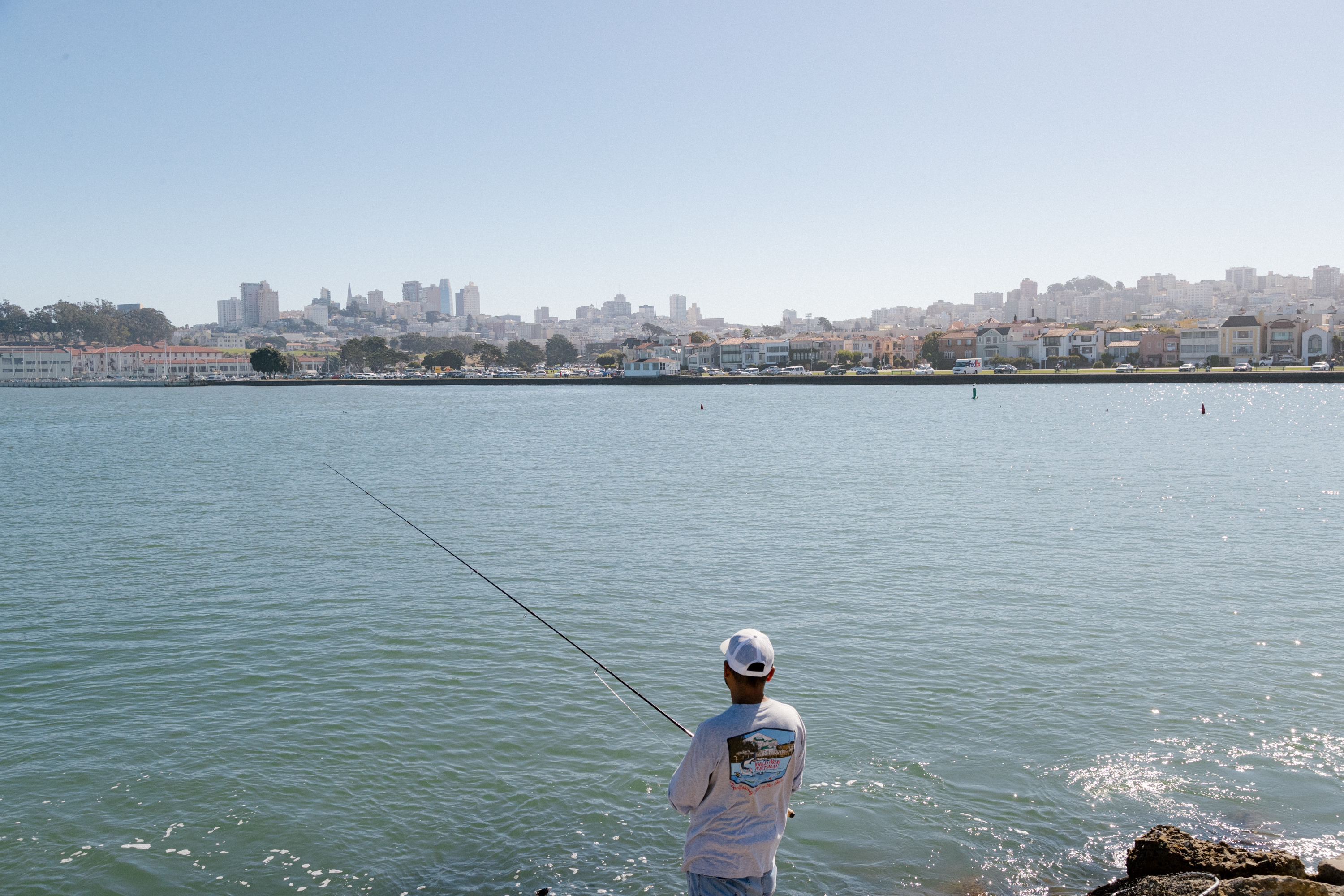San Francisco just moved one step closer to a controversial redesign of a Marina District harbor that would place yachts in front of one of the city’s most iconic views and clean up only some of the pollution the project was initially funded to deal with.
The San Francisco Recreation and Park Commission voted Thursday to move the project forward after an hourslong, sweltering hearing in front of a standing-room-only crowd that booed city staff as they laid out plans.
The vote came despite an effort by two city leaders to pause the project until more members of the public have a chance to weigh in.
The project would add new, larger boat slips to the harbor, placing parked yachts directly in front of the popular Marina Green promenade. Dozens of people who spoke during public comment at Thursday’s meeting balked at that idea, saying the harbor extension would block the beautiful view of the Marin Headlands and Golden Gate Bridge, transforming one of the city’s most iconic public spaces into an enclave for wealthy yacht owners.
“It’s not just for the rich people,” 70-year-old Lower Pac Heights resident Sharon Wong said about the Marina Green.
Boaters, meanwhile, mourned the potential loss of a training ground for young sailors, while environmental advocates said the project failed to clean up enough pollution on the site.
Wong, who grew up near the city’s densely populated Chinatown, said those open bay views have offered her a lifelong connection to nature. She lamented the potential loss of one of the best places people can come to escape the hustle and bustle of Downtown, where, Wong said, “we don’t have this big expansive nature.”
The marina redesign stems from a decadeslong legal battle between San Francisco and PG&E.
The utility’s former coal gasification plant near the harbor polluted the bay for years, and the city sued in 2001 over chemical compounds called polycyclic aromatic hydrocarbons discovered in the sediments of the East Harbor, according to the City Attorney’s Office. In 2021, PG&E settled with San Francisco, committing to pay up to $160 million to clean up harbor pollution. The settlement set off a multiyear discussion about how, exactly, to spend the money.
The proposal that came out of the process and went before the commission Thursday would radically change the marina. Many of the boat slips in the East Harbor, also known as Gashouse Cove, would be demolished, leaving a new shallow-water basin open to small boats like kayaks and canoes. Those boat slips would move to an expanded West Harbor, protected by a new breakwater, that would sit directly in front of the Marina Green.
The Recreation and Park Department argues that removing toxic pollutants from the lower East Harbor and rebuilding its boat slips, as many advocates want, would actually increase pollution because there’s natural sediment that covers the toxic material, according to department spokesperson Tamara Aparton.
“Rebuilding rather than relocating the harbor would require this natural sediment cover to be removed to accommodate the dredging required for the return of boats to the area,” Aparton told The Standard. “Removing the sediment cover would generate significant sediment pollution during construction.”
But critics of the project, including city supervisors Aaron Peskin and Ahsha Safaí, speculate that the decision to leave the toxic material untouched is driven by dollar signs. That’s because the proposed slips in front of the Marina Green would be larger, allowing the department to charge more to park. And the new breakwater would reduce the costly dredging needed to maintain the harbor.
“This can’t be driven by the desire just to make money,” Safaí told The Standard.
Currently, dredging the harbor costs millions, Recreation and Park Department Project Manager Monica Scott said during the meeting. As a result, the department subsidizes the marina with money from its general fund each year, Scott said. That subsidy has totaled $5 million over the last five years, according to Aparton.
“That is truly the goal that we’re trying to move away from when we talk about financial sustainability for the marina,” Scott said.
The project, as proposed, would spend about $68 million cleaning up pollution and $54 million on harbor renovations, Scott said.
Thursday’s commission vote directed city staff to conduct an environmental analysis of the project, which could take up to two years. In an apparent nod to the overwhelming public opposition to the project, commissioners also directed city staff to look into the financial feasibility of minimizing the number of slips in the West Harbor, where they have the potential to block views.
That consolation, however, didn’t sate Marina District resident Erin Roach, who has led opposition to the project.
“At the end of the day, [the Recreation and Park Department] is still trying to divert funds from this settlement to solve a separate issue with the West Harbor,” Roach said. “And in doing so, San Franciscans stand to lose a beloved landmark.”
Thursday’s vote did not bind the project to the current design, and it will come before the commission again once the environmental review wraps up. If it stays on track, construction would begin in 2026.
Whether the wiggle room introduced by the commission Thursday will warm Peskin to the process, which he previously described as authoritarian, is yet to be seen. He’s largely taken issue with a perceived lack of effort on the part of Recreation and Parks to involve community input.
“If the Recreation and Parks Commission doesn’t get the message,” he told The Standard ahead of the vote, “I imagine the Board of Supervisors will cut the funding.”
Correction: An earlier version of this article misstated the annual amount of money the Recreation and Parks Department pays from its general fund to subsidize the Marina.
